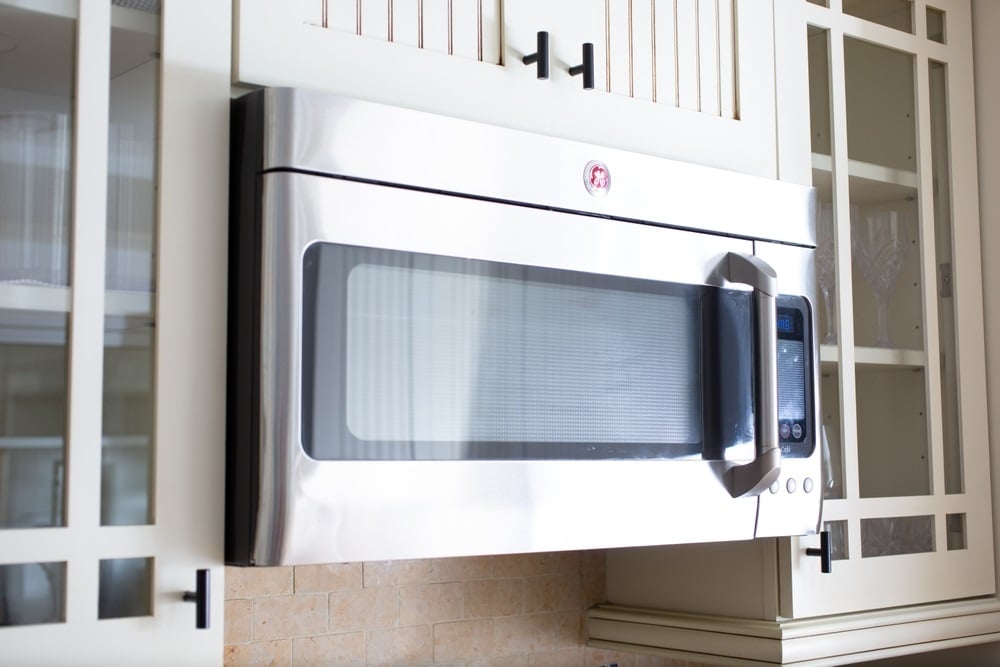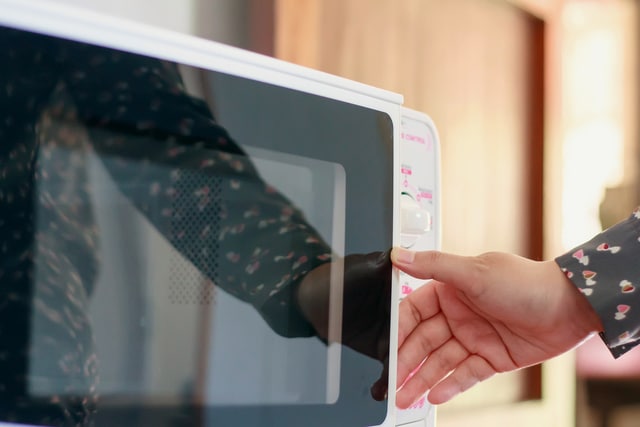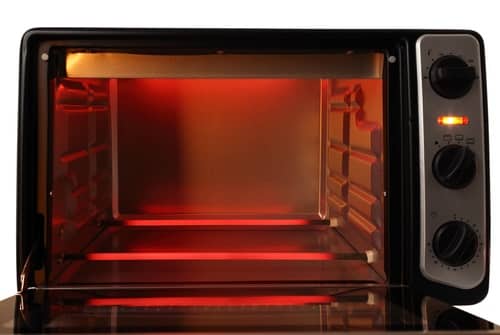
GE ovens come with glass-touch controls and dials and are super easy to use. In addition, they feature advanced convection in the upper and lower ovens, ensuring fast and even cooking.
Moreover, you can even set timers with GE ovens. And with the GE ovens’ WiFi connectivity, you can control the oven from your smartphone, which is a very convenient feature when you’re busy preparing meals.
However, if your GE microwave stops heating, many problems could be at play. Let’s delve deeper into it!
Reasons For GE Microwave Not Heating
1. High-Voltage Diode
Your microwave may be experiencing trouble with the high-voltage diode. This component converts alternating current to direct current and doubles the magnetron voltage. If this part is defective, the entire high-voltage circuit will not work.
Before replacing it, remove the high-voltage diode and check for continuity. To test the diode, remove the outer cabinet. Be sure to discharge the capacitor before touching the diode.
When the diode is burned out, it prevents the magnetron from receiving enough voltage to operate. The result is an uneven heating process.
Before attempting to test the High-Voltage Diode of an oven, unplug it from the power supply. Next, test the high-voltage capacitor and the High-Voltage Diode.
To test this component, remove it from the microwave and set your multimeter to Rx1. Test continuity in both directions. If the diode shows continuity in both directions, the high-voltage diode isn’t functioning correctly.
2. Door Switch
If your GE microwave has stopped heating, you may have a problem with the door switch. The door switch is responsible for controlling the power supply to the microwave when the door is closed.
If the door is not closed completely, the power cannot be supplied to the other components of the microwave. If unsure whether the door switch is broken, you can check it out by disengaging the microwave from the power supply and examining the unit.
A faulty door switch may not allow the microwave to heat. A broken door switch can cause the microwave to stop heating altogether.
In this case, you will have to replace the door switch. Another thing to look for is if the door hooks engage with the switch actuator when the door is closed. If they don’t, you can adjust them.
You should test the primary and secondary switch terminals with a multimeter on OHMS. Check the door switch and ensure that the probes touch the switch terminals.
If the readings show continuity in both directions, you can untighten the screws and replace the switch. On the other hand, if the reading shows continuity on one side, the door switch should work fine.
3. Magnetron
Before attempting to fix your microwave, it’s essential to find the exact problem. Sometimes, it’s a simple blown fuse, but a more serious issue is a malfunctioning magnetron.
If you notice that your GE microwave is not heating up, it may be the fault of the magnetron. This part is usually a large, square-shaped unit. When opening the housing, you’ll see the magnetron, which should have wires connecting it to the circuit.
This component consumes a lot of power and can fail. You can use a multimeter to check the resistance of the magnetron. It should be less than one ohm. If it is not, the problem lies with the magnetron, which must be replaced.
Changing the magnetron is not a simple process. The microwave’s performance will be greatly affected if the magnetron is damaged. So you need to call a professional immediately in order to get your magnetron replaced!
4. Faulty Heating Element
A faulty heating element is the most common reason an oven doesn’t heat. The heating element creates the heat that the unit requires for baking or broiling.
So, if it goes bad, you are likely to face this problem. You will need to replace the heating element to resolve this issue.
If you are a DIY person, you can replace the heating element yourself. Before replacing it, unplug the oven from the electrical socket or breaker and unscrew the heating element from the back of the oven.
Then, reconnect the electrical connectors and tighten the new heating element to the back of the oven.
The Bottom Line
GE microwaves are loved for their features and durability, but they can also run into niggles now and then. If your microwave is not heating, this article is for you. Consider trying these fixes before contacting customer care service.

